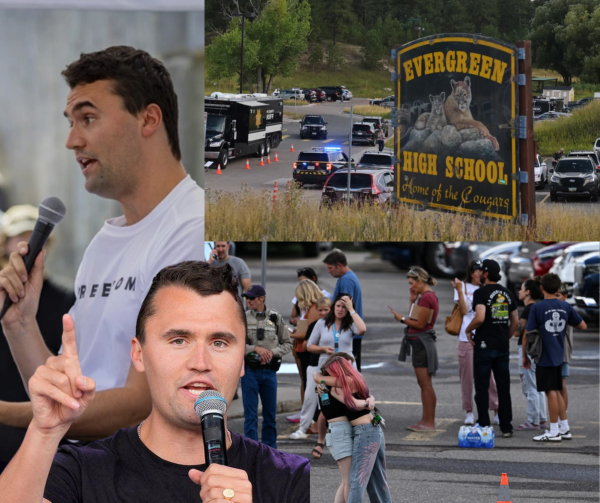On Defense
Elkhorn South considers implementing a self defense course for students
A list of survival tips: Never squirm if you’re in quicksand. Always say no to strangers in white minivans offering candy. Don’t shower during a thunderstorm. Avoid whirlpools. Get under a desk during an earthquake. All good knowledge to have in a world of worst-case scenarios, but impractical personal safety lessons for kids.
For all the common precautions that we were taught as children, school leaves one very crucial aspect of personal safety alone: self-defense. Protecting oneself against a potential threats goes much deeper than simply traveling with a buddy or carrying around Mace. There is far more to effective self-defense that students rarely explore. To remedy this, Elkhorn South is beginning to examine ways to insert such integral knowledge into highschoolers’ lives, either through a curriculum change or an optional class.
“We want to keep our kids safe, and there’s some people out there that have bad intentions towards our kids,” Deputy Tony Ramaeker said. “The more complex answer [to why self-defense is important] is that there’s a lot of stuff facing our young people today that we never had to deal with.”
“Stuff” like the high sex-trafficking rates in Nebraska, a prevalent use of date rape drugs, and a growing number of other methods to take advantage of individuals. This “stuff” may already lurk in the back of students minds as they walk to their cars at night after work, but for many seniors, college pushes these threats to the forefront of their thoughts.
Senior Laynie Emsick, a member of Student Council who supports introducing some type of self-defense education, has close friends in college that have experienced for themselves the serious scenarios in which self-defense becomes life-saving.
“I think our generation of girls is very knowledgeable about what goes on, what happens, and we’re really good about sticking together and sticking with someone you trust, but I don’t think a lot of people are aware of how to protect themselves when nobody else is around,” Emsick said.
Upon a recent school-board visit, associate superintendent Dr. Cindy Gray discussed the potential of a personal-safety course at the high school level. While changes to the curriculum and additions of electives cannot be guaranteed and are under review, the merits of such a class “warrant further discussion.”
“The benefits of self-defense skills would be that students would have a set of skills they can use if they were to accosted while walking, running, or simply going to their car in a parking lot,” Gray said.
If Elkhorn South were to integrate a self-defense course into its curriculum, the district would become the “golden standard” in Nebraska as no other school has included material that prepares students to protect themselves.
“Everybody’s afraid to approach it because you’re quote-unquote teaching kids how to fight,” Ramaeker said. “Well, there’s a big difference in teaching kids how to fight and how to defend themselves. Completely different techniques principles.”
If such a self-defense training opportunity were to exist as a PE credit (one of the potential options), Emsick believes it would be highly popular.
“I absolutely think that most of the girls in our class would enjoy and attend a self-defense class,” Emsick said. “Probably about 90% of the girls I talked to said ‘yes, we would take that.’ And not because they get out of weights, but because they actually want to know how to protect themselves.”
Ramaeker has taught self-defense courses for over thirty years. His latest program- what he would probably bring to South- comprehensively trains for multiple aspects of self-defense. As well as covering the statistics, strategies, and physical demands of responding in a threatening situation, the course content focuses on how to proactively prevent and decrease the chance of experiencing an attack.
With the repetition, simulation, and application the course provides, it is designed to create habits that the body will revert to when in a high-stress situation.
“When people don’t know what to do, they panic. If you do know what you are supposed to do and what you are capable of doing, the panic isn’t going to set in, you aren’t going to totally and completely freak out or freeze,” Ramaeker said. “When you have those neural pathways already built up… that stuff [self-defense skills] is already in your brain, so you’re going to be more confident about knowing what to do once you’ve already seen it.”
Ideally, a self-defense class would be held for both parents and students. According to Ramaeker, the two go hand in hand: as parents feel more comfortable sending their child away because of their in-depth knowledge of personal safety, that student will feel more confident living independently as a result.
While no tangible decisions have been made regarding inserting self-defense curriculum, ultimately, personal safety is a priority for the school, for students and their families, and for the faculty.
“We want you to go home after your night classes, we want you to go home safely after you leave work,” Ramaeker said. “And, I have two teenage girls myself, and I’m very confident that they can do that, but they’ve been “in training” for years, so if I can get that knowledge to the majority of our students that are going off to college, then the safer everybody’s going to be.”
STAYING SAFE
1) Don’t look like a target: when walking,
know what’s around you and stay off your
device
2) Be aware of your surroundings: notice any “pre-attack indicators”
in your environ-
ment and have your self-defense tools (like
pepper spray or keys) out and ready
3) Say no: if someone needs help (starting
a car, for example), don’t hesitate to say no.
“It’s hard that we have to do that, but it’s
what we have to do to stay safe, because
people will play on your emotions, they’ll
play on your generosity and your kindness
to make you victims.”
4) Be loud and vicious: if you can’t pre-
vent an attack, put up a fight
WHAT COULD A CLASS
COVER?
First: “On-Your-Butt learning”
Cover basic information about what self
defense is, when it is appropriate to use
it, and how it applies in the law
Next: Skills building
Slow progression from practicing preven-
tion techniques (like looking behind you
as you walk) to building the principles of
physical skills (“first rule: hit em where it
hurts”)
Last: Stress-induced scenarios
Train to respond to high stress situations
by following up a physical exercise (such
as burpees or sprints) with a self-defense
scenario

Hi! My name is Kate Aksyonov! I am the Senior Content Editor, and I have been on the Storm Alert Staff for four years!







